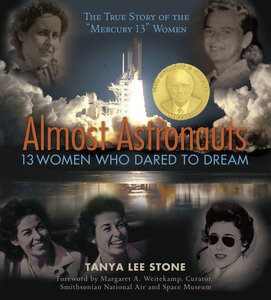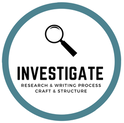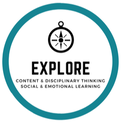BY ERIKA THULIN DAWES & XENIA HADJIOANNOU, ON BEHALF OF THE BIOGRAPHY CLEARINGHOUSE On January 20, 2021, we witnessed the swearing in of the first woman vice president of the United States of America. The oath of office was administered by Justice Sonia Sotomayor, the first Latina member of the court. This celebratory moment stood both as a joyous milestone marking just ‘how far’ women have come and was at the same time a stark reminder of persistent gender inequities in our society. The COVID-19 Pandemic has highlighted continued disparities as women have dropped out of the workforce at far higher numbers than their male counterparts, likely due to disproportionate responsibilities of child care and housework (Bateman & Ross, 2020). As we continue to work toward greater equality for women, here in the United States and globally, it is critical to share with young people the stories of women across history who have worked toward breaking boundaries for themselves and for other women. Tanya Lee Stone’s Almost Astronauts, 13 Women Who Dared to Dream is an important narrative in that history. Stone relates the story of women’s eventual entry to NASA’s space program by focusing on the stories of 13 women who dreamed of being astronauts and proved themselves through a private testing program in the early 1960s to be just as capable as their male counterparts. Almost Astronauts is a history text that is highly biographical. It features life stories, but it is not a traditionally organized biography of a single individual or a collection of biographies. To shape the historical narrative, Stone employs several biographer techniques such as well researched and documented character sketches, biographical blurbs, and narrative episodes. The latter are of particular note, as Stone’s vivid descriptions place the reader in the moment with these women as they pursue their dreams. The book is replete with photographs, as well as reproductions and descriptions of primary source documents and artifacts that support and enhance the narrated events but also help establish their historical context. With a compelling narrative, engaging life stories, and immersive description, Almost Astronauts is a versatile teaching tool for middle and high school classrooms. It fits well in units on space exploration, women’s history, boundary breaking, gender stereotyping, and narrative writing. In our entry on The Biography Clearinghouse, we use the Investigate, Explore, and Create Model to present ideas for using this book in the classroom as a read aloud, a text to use in literature circles, a mentor text, and a resource text.
Below we feature one of two time-gradated teaching recommendations included in the Create section of our Almost Astronauts Book Entry. Composing Multimodal Multigenre Biographies When researching the Mercury 13, Tanya Lee Stone used an array of multimodal primary and secondary sources, which are listed at the back of the book. The book itself includes many photographs, descriptions of images and events, and transcripts of interactions that reproduce or explicitly reference those sources. In our entry on Almost Astronauts at The Biography Clearinghouse you will find a curated list of multimodal resources to open up the world of the book for classroom communities and support an immersive, multimodal engagement with it. In this recommendation, students have the opportunity to engage in their own biography research and experiment with biography composition through a multimodal, multigenre approach.
ReferencesBateman, N., & Ross, M. (2020, October 14). Why has COVID-19 been especially harmful for working women? Brookings Institute Essays. https://www.brookings.edu/essay/why-has-covid-19-been-especially-harmful-for-working-women/ Harper, L. (1997). The writer’s toolbox: Five tools for active revision instruction. Language Arts, 74(3), 193–200. Erika Thulin Dawes is a Professor of Language and Literacy at Lesley University where she teaches courses in children’s literature and early childhood literacy. She blogs about teaching with children’s literature at The Classroom Bookshelf, a School Library Journal blog, and is a former chair of NCTE’s Charlotte Huck Award for Outstanding Fiction for Children. Xenia Hadjioannou is an Associate Professor of Language and Literacy Education at the Harrisburg campus of Penn State University where she teaches and works with pre- and in-service teachers through various courses in language and literacy methodology. She is the co-director of the Capital Area Writing Project, the Vice President and Website Manager of the Children's Literature Assembly, and a co-editor of The CLA Blog. Comments are closed.
|
Authors:
|
CLA
About CLA
|
Journal of Children's Literature
Write for JCL
|
ResourcesCLA-sponsored NCTE Position Statements
|
Members-Only Content
CLA Video Library
|
© COPYRIGHT 2018.
ALL RIGHTS RESERVED |




 RSS Feed
RSS Feed